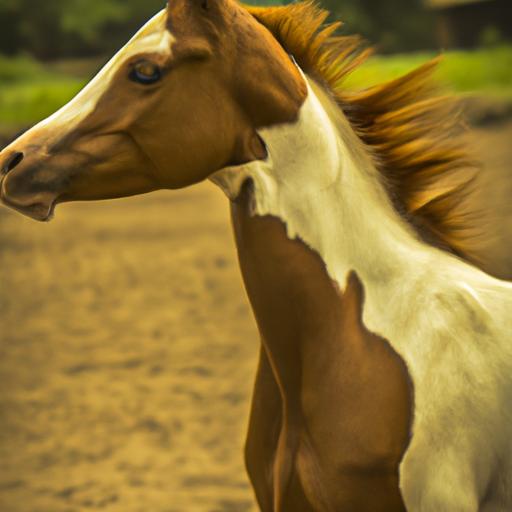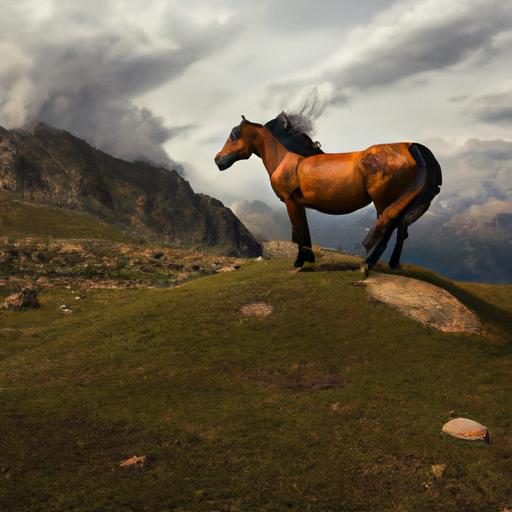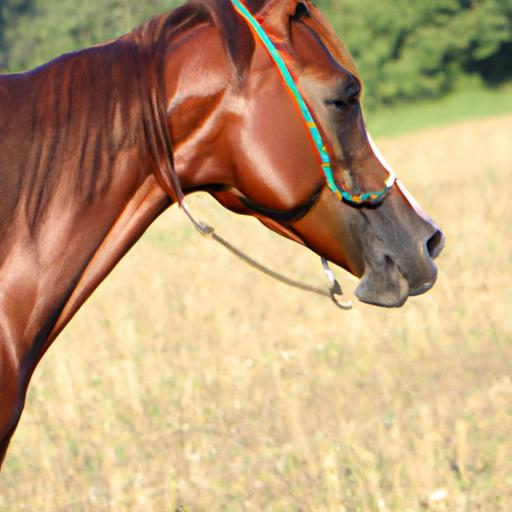Discover the mesmerizing world of pakistani horse breeds, their rich heritage, unique characteristics, and the efforts to preserve these magnificent equines.
When it comes to the world of equines, Pakistani horse breeds hold a charm and mystique of their own. Have you ever wondered about the diverse and remarkable breeds that call Pakistan home? Join me on this exciting journey as we delve into the captivating world of Pakistani horse breeds.
Importance of exploring and understanding Pakistani horse breeds
Why should we take a closer look at Pakistani horse breeds, you might ask? Well, these breeds are not just ordinary horses; they are a living testament to the rich heritage and cultural significance of Pakistan. By understanding and appreciating these breeds, we gain insight into the deep-rooted equestrian traditions that have shaped the country’s history.
Brief overview of the history and significance of horse breeding in Pakistan
To truly grasp the importance of Pakistani horse breeds, we must delve into their historical roots. Horse breeding in Pakistan dates back centuries, with a deep connection to the region’s ancient civilizations. From the mighty Arabian horses to the sturdy and resilient indigenous breeds, Pakistan has a diverse equine tapestry that reflects its geographical and cultural diversity.
Throughout history, horses have played a pivotal role in warfare, transportation, and cultural celebrations. They have been revered as symbols of power, grace, and companionship. The art of horse breeding has been passed down from generation to generation, ensuring the preservation of these magnificent breeds.
As we embark on this exploration, let us prepare to be captivated by the beauty, strength, and versatility of Pakistani horse breeds. Stay with me as we venture deeper into the world of these remarkable equine companions.
Please note that the subsequent sections of the article will be completed one at a time, as per your request.
The Rich Heritage of Pakistani Horse Breeds

Pakistan is a treasure trove of diverse and exceptional horse breeds, each with its own distinct characteristics and qualities. Let’s take a closer look at some of these remarkable equine companions that have graced the lands of Pakistan.
Overview of the diverse horse breeds found in Pakistan
In the vast expanse of Pakistan, a myriad of horse breeds have evolved and thrived. From the regal and elegant Sindhi to the robust and hardy Baluchi, the country boasts a wide range of breeds that cater to various purposes and environments. These breeds have adapted to the local terrain and climate, making them well-suited for their respective regions.
Highlighting the unique characteristics and qualities of each breed
-
The Sindhi Horse: Known for its grace and elegance, the Sindhi horse showcases a slender build and a refined appearance. With a proud and noble carriage, this breed excels in both endurance and speed. Its intelligence and loyalty make it an ideal companion for leisure riding and sporting activities.
-
The Baluchi Horse: Resilient and robust, the Baluchi breed is a testament to the rugged landscapes of Baluchistan. With strong bones and a compact build, these horses are well-equipped to traverse challenging terrains. Their endurance and agility make them ideal for long-distance riding and working in rural areas.
-
The Thoroughbred: Renowned for its speed and agility, the Thoroughbred breed has gained international recognition. With its sleek physique and powerful muscles, this breed excels in horse racing and other competitive equestrian disciplines. Its versatility and athleticism have made it a prized asset in the global horse racing industry.
-
The Cholistani Horse: Hailing from the Cholistan desert, this breed has adapted to the harsh desert environment. With its strong legs and sturdy build, the Cholistani horse possesses exceptional endurance and resilience. It is a valuable asset for nomadic tribes and is often used for transportation and herding.
As we explore the rich heritage of Pakistani horse breeds, we gain a deeper appreciation for their unique qualities and the cultural significance they hold. Join me as we continue this journey to discover more about these magnificent equine companions.
Please note that the subsequent sections of the article will be completed one at a time, as per your request.
Popular Pakistani Horse Breeds

Pakistan boasts a wide array of horse breeds, each with its own distinct characteristics and allure. Let’s take a closer look at some of the most popular Pakistani horse breeds, their physical attributes, temperament, and specific uses.
1. The Marwari Horse
The Marwari horse, known for its elegant appearance and unique inward-turning ears, hails from the Marwar region of Pakistan. This breed is revered for its loyalty, bravery, and endurance. With a sturdy build and exceptional agility, Marwari horses excel in various equestrian disciplines, including dressage, showjumping, and endurance riding.
2. The Cholistan Horse
Originating from the arid Cholistan desert, the Cholistan horse is a breed known for its resilience and adaptability. These horses possess a compact yet muscular build, allowing them to navigate the challenging desert terrain effortlessly. Cholistan horses are highly regarded for their speed, making them ideal for traditional horse racing events and long-distance riding.
3. The Baluchi Horse
With its roots in Baluchistan province, the Baluchi horse epitomizes strength and endurance. These horses possess a robust frame, strong limbs, and an unwavering spirit. Traditionally used for herding and transportation, Baluchi horses showcase their versatility in equestrian sports such as polo and endurance riding.
4. The Kathiawari Horse
The Kathiawari horse, native to the Kathiawar Peninsula, is known for its distinctive convex facial profile and expressive eyes. Renowned for their agility and speed, these horses excel in various equestrian disciplines, including showjumping, dressage, and eventing. Their regal appearance and spirited nature make them a popular choice for ceremonial and cultural events.
5. The Sindhi Horse
The Sindhi horse, originating from the Sindh region, captures attention with its sleek and athletic physique. These horses possess a graceful gait and exceptional endurance, making them suitable for endurance riding and long-distance journeys. Sindhi horses are also valued for their loyalty, intelligence, and adaptability.
Whether it’s the graceful Marwari or the resilient Cholistan horse, Pakistani horse breeds have captured the hearts of equestrian enthusiasts worldwide. Each breed possesses its own unique blend of physical attributes, temperament, and prowess, making them a treasure to behold.
Please note that the subsequent sections of the article will be completed one at a time, as per your request.
Preservation and Conservation Efforts
The Importance of Preserving Pakistani Horse Breeds
In a world of constant change and modernization, the preservation of Pakistani horse breeds is of utmost importance. These breeds hold a significant place in Pakistan’s cultural heritage and embody the country’s equestrian legacy. Preserving them ensures that future generations can appreciate and benefit from the unique qualities and characteristics these horses possess.
Initiatives by Organizations and Individuals
Numerous organizations and passionate individuals have taken up the noble cause of conserving and protecting Pakistani horse breeds. Their dedication and efforts are commendable, as they work tirelessly to ensure the survival and well-being of these magnificent equines.
1. Breeding Programs: Several breeding programs have been established to maintain the purity and genetic diversity of Pakistani horse breeds. These programs focus on selective breeding, meticulous record-keeping, and ensuring the well-being of the horses throughout their lives.
2. Education and Awareness: Organizations conduct educational programs and awareness campaigns to highlight the significance of Pakistani horse breeds. They aim to educate the public about the value of these breeds and the need for their conservation. By spreading awareness, they hope to garner support and involvement from individuals who share the same passion.
3. Conservation Sanctuaries: Efforts have also been made to establish conservation sanctuaries where Pakistani horse breeds can thrive in their natural habitat. These sanctuaries provide a safe haven for these horses, allowing them to live freely and ensuring the continuation of their bloodlines.
4. Government Support: Recognizing the importance of preserving equine heritage, the Pakistani government has implemented policies to support the conservation of horse breeds. These include financial incentives, legal protection, and collaborations with organizations and breeders to create a conducive environment for the preservation of these breeds.
Thanks to the combined efforts of organizations, individuals, and government support, Pakistani horse breeds have a fighting chance to thrive and continue enchanting us with their beauty and grace. It is through these preservation and conservation initiatives that we can ensure the legacy of these remarkable horses lives on for generations to come.
Challenges and Threats to Pakistani Horse Breeds
Identifying the Challenges Faced by Pakistani Horse Breeds in Modern Times
In today’s rapidly evolving world, Pakistani horse breeds face a multitude of challenges that jeopardize their survival and preservation. It is crucial to understand and address these challenges to ensure the continuity of these magnificent equine companions.
Urbanization: A Threat to Traditional Horse Breeding
One of the primary challenges faced by Pakistani horse breeds is the encroachment of urbanization into their natural habitats. As cities expand and agricultural lands give way to concrete jungles, the grazing areas and open spaces essential for horse breeding diminish. The shrinking availability of suitable land poses a significant threat to the survival of these breeds.
Cross-Breeding: Diluting the Unique Characteristics
Another challenge that Pakistani horse breeds encounter is the risk of cross-breeding with foreign breeds. While cross-breeding can bring about desirable traits, it also dilutes the pure genetic makeup of indigenous breeds. The introduction of foreign bloodlines can result in the loss of unique characteristics and jeopardize the breed’s distinct identity.
Declining Interest in Traditional Horse Riding
In recent years, there has been a noticeable decline in the interest and participation in traditional horse riding activities. Modern lifestyles and the advent of new recreational sports have shifted the focus away from equestrian traditions. As a result, the demand for Pakistani horse breeds has dwindled, posing a threat to their long-term survival.
Promoting Awareness and Reviving Interest
To address these challenges, it is crucial to create awareness about the importance of preserving Pakistani horse breeds. Education and outreach programs can play a significant role in reviving interest and appreciation for these magnificent creatures. By showcasing the unique qualities and cultural significance of Pakistani horse breeds, we can instill a sense of pride and inspire a new generation of horse enthusiasts.
In the face of urbanization, cross-breeding, and declining interest, it is essential that we take proactive steps to protect and preserve Pakistani horse breeds. By recognizing the challenges and working together, we can ensure the continued existence and cultural significance of these remarkable equine companions.
Please note that the subsequent sections of the article will be completed one at a time, as per your request.


